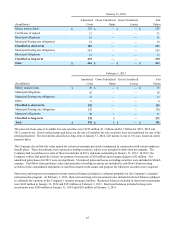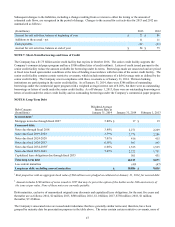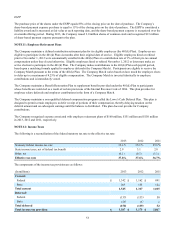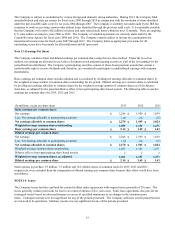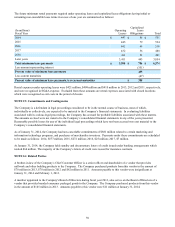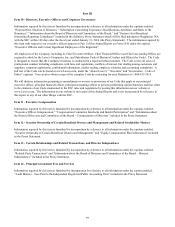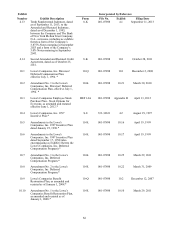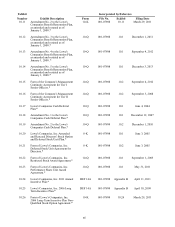Lowe's 2013 Annual Report Download - page 63
Download and view the complete annual report
Please find page 63 of the 2013 Lowe's annual report below. You can navigate through the pages in the report by either clicking on the pages listed below, or by using the keyword search tool below to find specific information within the annual report.
55
The Company is subject to examination by various foreign and domestic taxing authorities. During 2013, the Company filed
amended federal and state tax returns for fiscal years 2008 through 2010 in conjunction with the resolution of items identified
under the previous IRS audit cycle for tax years 2004 through 2007. The Company is currently not under audit by the IRS but
continues to work on resolving various other federal items identified through the previous audit cycle. It is reasonably possible
that the Company will resolve $62 million in federal and state related audit items within the next 12 months. There are ongoing
U.S. state audits covering tax years 2006 to 2012. The Company’s Canadian operations are currently under audit by the
Canada Revenue Agency for fiscal years 2009 and 2010. The Company remains subject to income tax examinations for
international income taxes for fiscal years 2007 through 2012. The Company believes appropriate provisions for all
outstanding issues have been made for all jurisdictions and all open years.
Note 13: Earnings Per Share
The Company calculates basic and diluted earnings per common share using the two-class method. Under the two-class
method, net earnings are allocated to each class of common stock and participating security as if all of the net earnings for the
period had been distributed. The Company’s participating securities consist of share-based payment awards that contain a
nonforfeitable right to receive dividends and, therefore, are considered to participate in undistributed earnings with common
shareholders.
Basic earnings per common share excludes dilution and is calculated by dividing net earnings allocable to common shares by
the weighted-average number of common shares outstanding for the period. Diluted earnings per common share is calculated
by dividing net earnings allocable to common shares by the weighted-average number of common shares as of the balance
sheet date, as adjusted for the potential dilutive effect of non-participating share-based awards. The following table reconciles
earnings per common share for 2013, 2012 and 2011:
(In millions, except per share data)
2013
2012
2011
Basic earnings per common share:
Net earnings
$
2,286
$
1,959
$
1,839
Less: Net earnings allocable to participating securities
(16
)
(14
)
(15
)
Net earnings allocable to common shares
$
2,270
$
1,945
$
1,824
Weighted-average common shares outstanding
1,059
1,150
1,271
Basic earnings per common share
$
2.14
$
1.69
$
1.43
Diluted earnings per common share:
Net earnings
$
2,286
$
1,959
$
1,839
Less: Net earnings allocable to participating securities
(16
)
(14
)
(15
)
Net earnings allocable to common shares
$
2,270
$
1,945
$
1,824
Weighted-average common shares outstanding
1,059
1,150
1,271
Dilutive effect of non-participating share-based awards
2
2
2
Weighted-average common shares, as adjusted
1,061
1,152
1,273
Diluted earnings per common share
$
2.14
$
1.69
$
1.43
Stock options to purchase 1.9 million, 7.5 million and 18.2 million shares of common stock for 2013, 2012 and 2011,
respectively, were excluded from the computation of diluted earnings per common share because their effect would have been
anti-dilutive.
NOTE 14: Leases
The Company leases facilities and land for certain facilities under agreements with original terms generally of 20 years. The
leases generally contain provisions for four to six renewal options of five years each. Some lease agreements also provide for
contingent rentals based on sales performance in excess of specified minimums or on changes in the consumer price
index. Contingent rentals were not significant for any of the periods presented. The Company subleases certain properties that
are not used in its operations. Sublease income was not significant for any of the periods presented.


